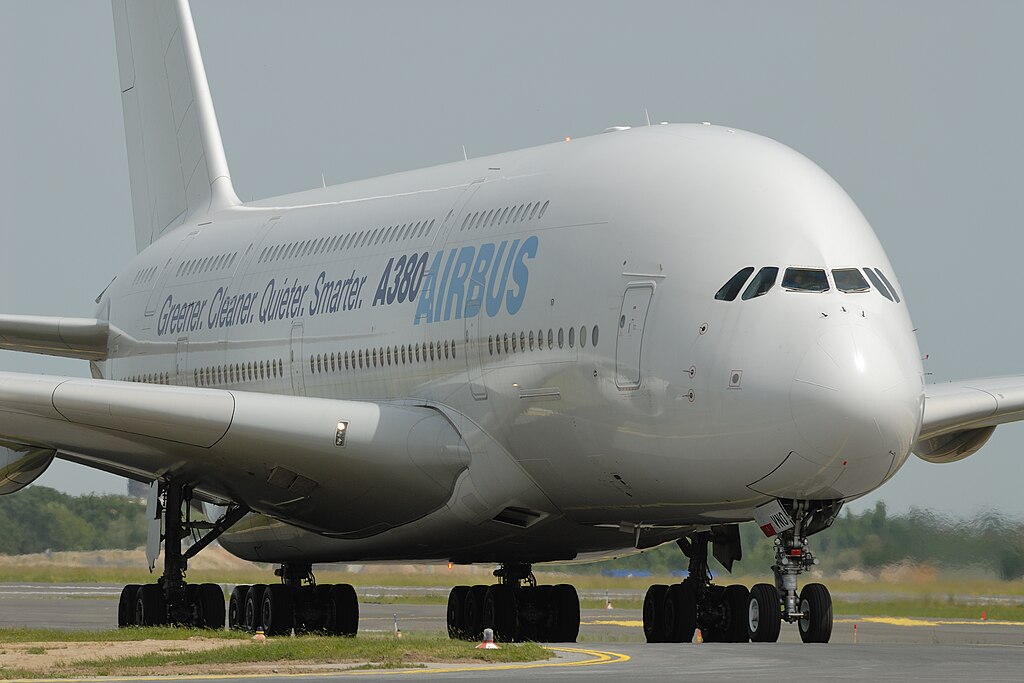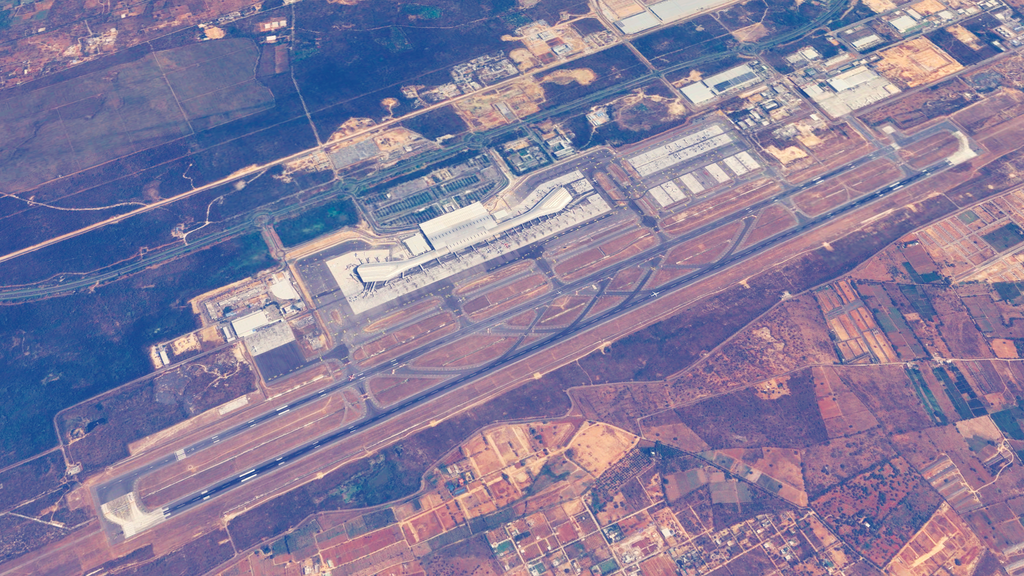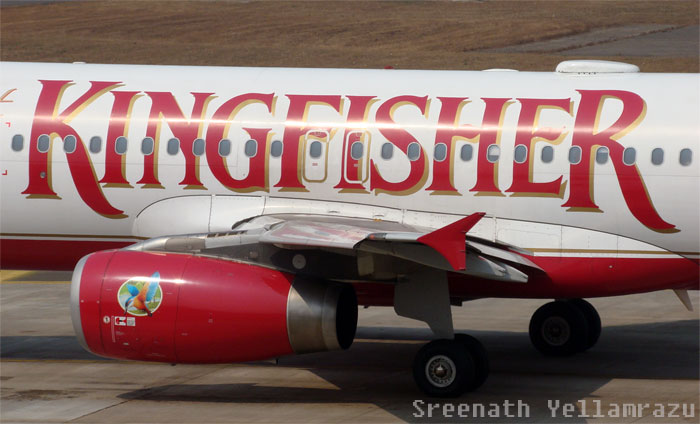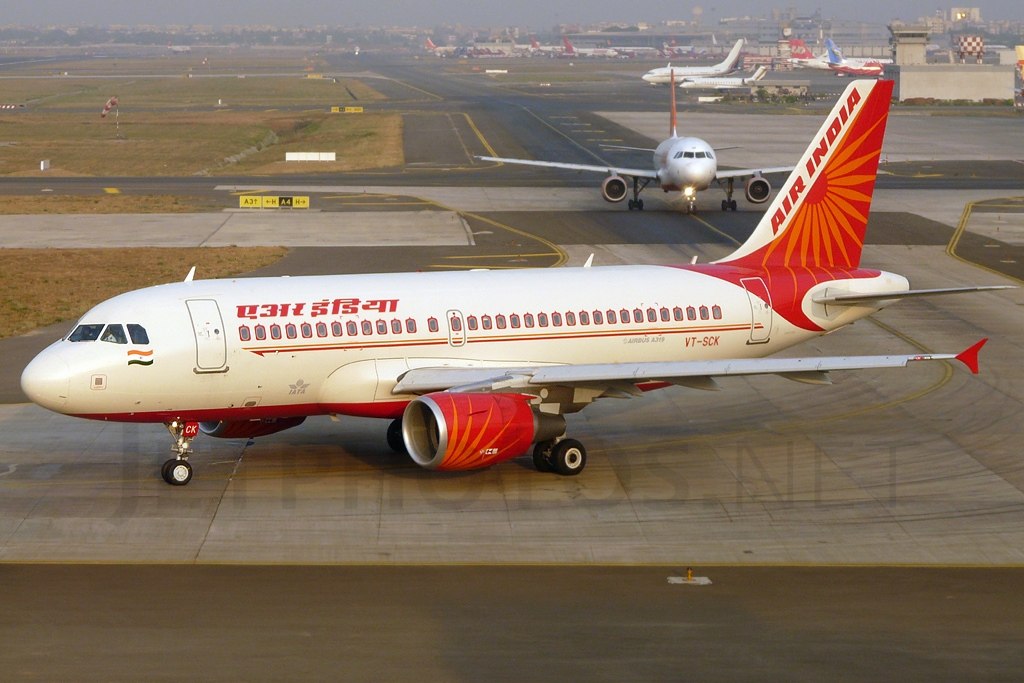Air-India Airbus A319-112
Photo: Sean D Silva | Wikimedia CommonsMany people feel that the Airbus A380 – the largest passenger aircraft in the world – should have arrived in a nation like India earlier. Many aviation enthusiasts in India wish they could see this aircraft regularly in the Indian skies. It is hoped that Air India can secure this aircraft as a part of its fleet. Air India, which made a historic aircraft order with Airbus, ordering 250 fixed-wing. The aircraft they ordered include:
- A320neo -140 Aircraft
- A321neo single-aisle-70 Aircraft
- A350-1000-34 Aircraft
- A350-900 wide-body-6 Aircraft [Airbus A350-900 is deployed in the third-longest non-stop flight as well as the third longest one-stop flight in the world]
In this deal there were plenty of widebody aircraft. This is one of the reasons why people believe that Air India might be able to add the A380 to its fleet. According to The Economic Times, the Civil Aviation Ministry approved the operations of Airbus A380s in 2014 in four different airports:
- Delhi Airport (which ranks among the busiest airports in the world)
- Mumbai
- Hyderabad
- Bangalore.
After the approvement of the four airports,the general manager of India for Singapore Airlines (which was the launch customer of the A380) said
“The clearance to deploy A380s on Indian routes is favourable news to the Indian aviation industry. Singapore Airlines will evaluate the commercial viability of this recent development based on available traffic rights and resources,”
Airbus A380

Photo: Jochen Teufel | Wikimedia Commons
The Airbus A380 is the world’s largest passenger airliner and the only full-length double-deck jet airliner in existence. No other aircraft matches its capacity, as it can accommodate 525 passengers in a typical configuration, with a maximum certified capacity of 853 passengers. Currently, it stands as the largest operating airplane in the world, especially after the Antonov An-225, which was the largest cargo aircraft, was destroyed during the Russia-Ukraine war. Let’s have look the specifications of the A380:
| Length | 238 ft 7 in (72.7 m) |
| Wingspan | 261 ft 8 in (79.7 m) |
| Height | 79 ft 0 in (24.1 m) |
| Engine Options | Rolls Royce Trent 900, Engine Alliance GP7200 |
| Range | 8,000 NM (14,800 km) |
| Cruise Speed | Mach 0.85 |
Challenges of Introducing the Airbus A380 in India
The historic aircraft orders of Air India shows that there is a need of an aircraft like the A380 that can accommodate a number of passengers. But why don’t we see it?
Lack of demand
The airline industry primarily operates on two Models:
- The hub-and-spoke model
- The point-to-point model.
Hub-and-spoke model
In the hub-and-spoke model, airlines connect passengers not just between two points but through a central hub, allowing for more efficient travel. For example, if we consider a city like Indore, smaller aircraft would arrive from various locations, and passengers would be consolidated at the hub before being distributed to their final destinations. This model allows larger planes to operate more efficiently, as they can carry more passengers and reduce fuel costs.
When the Airbus A380 was designed, it was intended to operate under this model, which was popularized by U.S. carriers like American Airlines and is still utilized by airlines such as Emirates. However, this model does not work effectively in India due to its geographical location.
The hub-and-spoke model has become inefficient for airlines, with direct flights proving to be more profitable. As a result, airlines in India are now focusing on aircraft with 400 to 500 seats. Further many airlines around the world are phasing out the A380 from its fleet- Air France was the first carrier to do so.
The geographical location of India isn’t catered to the A380
Historically, airlines had limited range, making the hub-and-spoke model essential. However, with advancements in aircraft technology, this model has become less relevant for shorter distances. In India, the distances between major cities are still significant, and passengers often need to make connections, which complicates direct travel.
In contrast, the Middle Eastern countries have successfully implemented this model, with hubs like Dubai serving as central points for connecting passengers from the East and West. The A380 is a popular aircraft for Middle East carriers. Emirates has a fleet of more than a hundred A380s. However, India’s geographical position makes it challenging to establish a similar hub-and-spoke system.
While Singapore has emerged as a hub for some international travel, most of the traffic is east-west, making it difficult for India to adopt this model effectively. Although India once followed the hub-and-spoke model, the emergence of numerous domestic airlines has led to a shift towards the point-to-point model. This model allows flights to operate directly from one origin to a final destination, making travel more convenient for passengers.
Additionally, the hub-and-spoke model presents challenges such as:
- Heavier aircraft such as the A380 have larger landing fees and airport infrastructure costs. Also airports outside the ones mentioned above aren’t qualified for A380 operations.
- Maintenance issues during takeoff and landing can further complicate the operation of large aircraft like the A380.
Airport infrastructure

Photo: Anonymous8010 | Wikimedia Commons
One significant challenge is the infrastructure of the aerodrome where the A380 will operate. The A380 requires specialized facilities, including longer runways, wider taxiways, and larger gates.
Operational and maintenance costs of Airbus A380
Another issue is the high operational and maintenance costs associated with the A380. Maintaining this aircraft is more complex compared to other models,
- It has multiple landing gears that require extensive maintenance. The larger airframe also incurs higher maintenance costs.
- The A380 requires a larger crew, including extra cockpit members, which further increases operational expenses.
- When the aircraft is on the ground, it consumes fuel, contributing to overall operating costs, which is not favorable for airlines.
Negative reputation of Indian airlines with Airbus

Photo: Sreenath y | Wikimedia Commons
A further challenge is the negative reputation of Indian airlines. It is not that no Indian airline has attempted to introduce the A380; in fact, Kingfisher Airlines placed orders for the aircraft several years ago. Known for its luxury-focused services, Kingfisher ordered multiple A380s in 2005. In a statement to Airbus at the time of the order, CEO Vijay Mallya said,
“India is one of the world’s fastest-growing markets, especially among the younger emerging generation, and these new Airbus aircraft, with their unmatched passenger appeal, economy and commonality, will give us the lead in competing for their business … when we become the first Indian carrier with the 21st Century flagship A380, before adding the world’s newest airliner, the A350. Imagine flying the good times, not just in India, but worldwide!”
However, the airline struggled to establish its commercial operations effectively and defaulted before the aircraft could be delivered. This issue was not limited to Kingfisher; other major airlines also placed orders for the A380 but canceled them when delivery time approached.
Uncertain Future of the A380 in India’s Aviation Landscape
As for whether the A380 will ever operate in India again, it is uncertain. There may be specific routes where it could be viable, but Airbus has ceased production of the A380 due to the challenges faced by airlines worldwide. Consequently, the A380 is often regarded as a “failed” aircraft, as it has not been able to operate successfully. And it would be difficult to imagine a failed aircraft being successful in a nation that is rife with examples of failed carriers.

